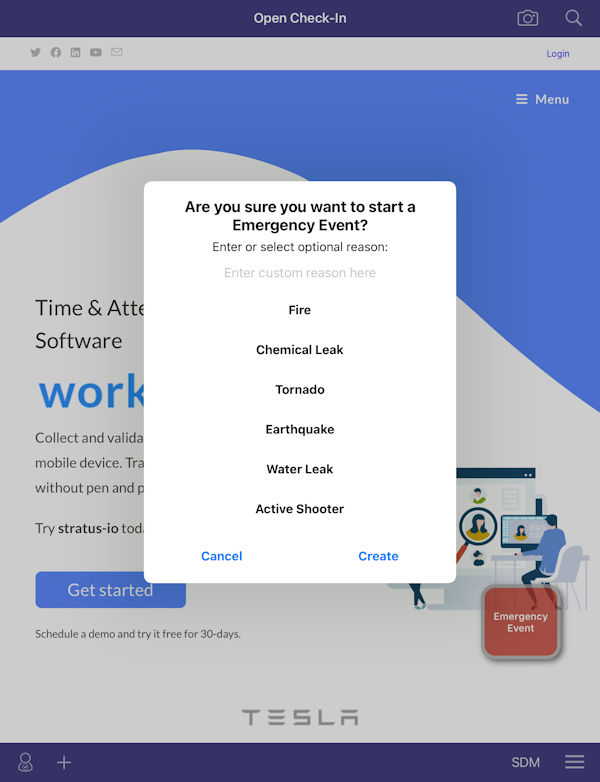How to Handle Workplace Emergencies
Workplace emergencies can strike without warning. How we respond can mean the difference between minor inconveniences and genuine threats to safety. Therefore, it’s important to understand the different types of emergencies that may arise and how to handle them.
What Constitutes Workplace Emergencies?
A workplace emergency is any situation that immediately endangers the well-being of employees, visitors, or the work environment. These emergencies can result from internal incidents or external events. Some may only affect certain sectors or workplaces, while others could impact all organizations. Disaster preparedness begins with identifying possible emergencies in your workplace and being ready to respond effectively.
Natural Emergencies

Preparing for natural emergencies like earthquakes, floods, hurricanes, wildfires, and severe weather is challenging. Their unpredictable nature affects logistics and requires broad readiness. Cooperation and adaptability are key to effectively facing these formidable forces beyond the workplace.
Work-Related Emergencies

Among the most common workplace emergencies are work-related incidents. These can encompass chemical spills, gas leaks, electrical hazards, and machinery malfunctions. Dealing with such emergencies necessitates swift action to prevent injuries and mitigate damages. A combination of prevention measures, thorough training, and effective response plans is crucial to address work-related emergencies efficiently.
Civil Emergencies

Civil emergencies encompass a diverse array of scenarios that can strike unexpectedly. For example, fervent protests, unsettling workplace violence, and the harrowing grip of public health crises can wreak havoc on our workplaces. During these challenging times, the importance of collaboration and unity becomes absolutely crucial. We are compelled to come together with external agencies and authorities, leveraging our collective strengths to bravely face and overcome workplace emergencies.
How to Handle Workplace Emergencies
Regardless of the type of emergency, having a well-prepared and practiced response plan is critical. This minimizes the impact on employees, customers, and businesses alike. But what exactly should an emergency response plan entail?
First and foremost, it’s essential to brainstorm potential worst-case scenarios that could unfold in your workplace. Natural and civil emergencies are common to all workplaces, so conducting a thorough risk assessment is a priority. This identifies specific workplace-related risks and unforeseen circumstances is crucial.
Customize your plan to suit your workplace’s unique characteristics, as each environment poses distinct risks that could lead to emergencies. Considering the individual logistical considerations in handling emergencies ensures a tailored approach to preparedness. While workplace emergency plans can’t be a one-size-fits-all solution, they should all encompass core features aimed at safeguarding lives and maintaining business continuity.
Evacuation Procedures: The Emergency Safety Plan should include the details of any evacuation procedures that may be required during an emergency. Outline details of evacuation procedures, including emergency exits, stair locations (to avoid lifts), and designated rally points for employees to gather after evacuating.
Designate Emergency Response Team: Appoint a well-trained emergency response team responsible for handling crises and guiding others during challenging situations.
Maintain Safety Equipment: Regularly inspect and maintain safety equipment, such as fire extinguishers, first aid kits, and emergency exits, ensuring they are functional when needed.
Collaborate with External Authorities: Establish relationships with local law enforcement, fire departments, and emergency services to facilitate coordinated responses during larger-scale emergencies.
Incident Reporting: Utilize Cloud-In-Hand ® Incident Reporting feature, offering real-time alerts to all employees during emergencies. The system streamlines procedures, ensuring a swift response and maintaining order amidst chaos.
Cloud-In-Hand Incident Reporting featuring
Conclusion
Handling workplace emergencies may seem daunting. With the right tools and preparations, organizations will bolster their emergency response capabilities significantly. Cloud-In-Hand’s Emergency Mustering feature stands out as a proactive step towards safeguarding the most valuable asset of any organization—their employees. By providing a comprehensive and efficient emergency response solution, Cloud-In-Hand reinforces its commitment to creating safer and more secure workplaces, making it an indispensable tool for forward-thinking organizations.



